After two typhoons, Typhoon Xangshen in 2000 and Typhoon Nari in 2001, the drainage and flood control projects have become a matter of concern for everyone. However, when it comes to the implementation of the project, the public does not want to deal with it by means of containment, and suggests that flood control should be achieved by means of flood storage and ecological methods, thus lowering the height of the embankment. Japan's rainfall pattern is quite similar to that of Taiwan, with heavy rainfall and typhoon rainfall and after urban development, the design standards for sewers have also been reviewed and improved and at that time, the development of integrated water management technology, which is worthwhile for the city to learn from.
The Public Works Department of the City had organized a delegation to visit Japan in 2002, aiming to learn from the successful experience and countermeasures in advanced countries and gradually implement them in the City, in order to provide solutions to the drainage problems in the City. Also, we hope that by referring to the technology development in water resources in foreign cities, we can provide a vision for developing our city's policy and management system to support the development of water resources in our city. It is also hoped that through the breakthrough of water resources information technology, we will be able to consolidate water resources technology including geographic databases, rainfall runoff in metropolitan and suburban areas, river hydrological analysis, urban flood simulation and real-time monitoring systems can gradually transform the management of the city's rivers and sewers into a real-time, accurate, technical and systematized model and to develop automation of the city's pumping stations and related concepts.
The Taipei City Government has built 42 rainfall stations and 214 water level stations for stormwater drainage in the urban area and has integrated the water information into the water monitoring system of the Taipei City Typhoon Prevention Center, which provides real-time monitoring information on rainfall, sewer level, and river level in each pumping station. Therefore, the integrated water information provided to the pumping station operators or the automated monitoring system can be used as a reference for controlling the pumping station facilities, so that the pumping units can be activated as soon as the heavy rainfall occurs to improve the efficiency in the drainage operation of the pumping stations, which is shown in the figure below.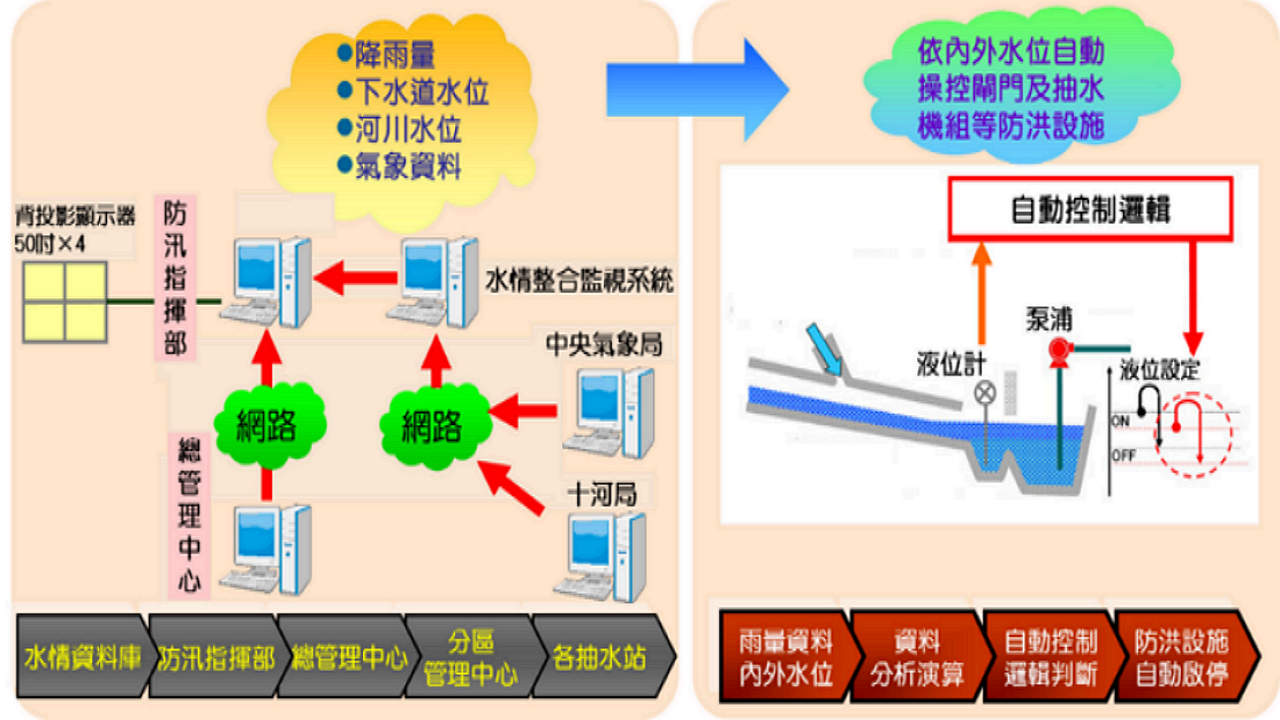
Automatic control concept
I.Automatic Operations
Central control system and automatic operation program are built in each pumping station to automatically start the unit according to the water level in the front pool.
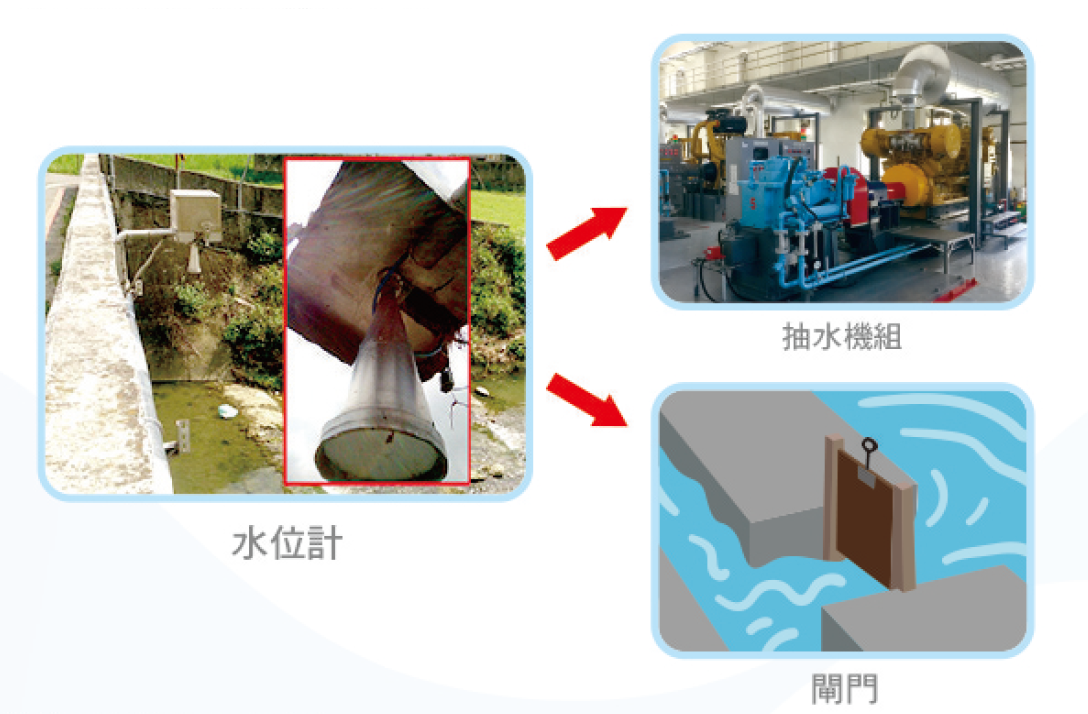
II.Remote surveillance
Through a dedicated fiber optic network, the equipment can be directly controlled and the operation or alarm signals can be sent back to the district management center to remotely monitor and control.
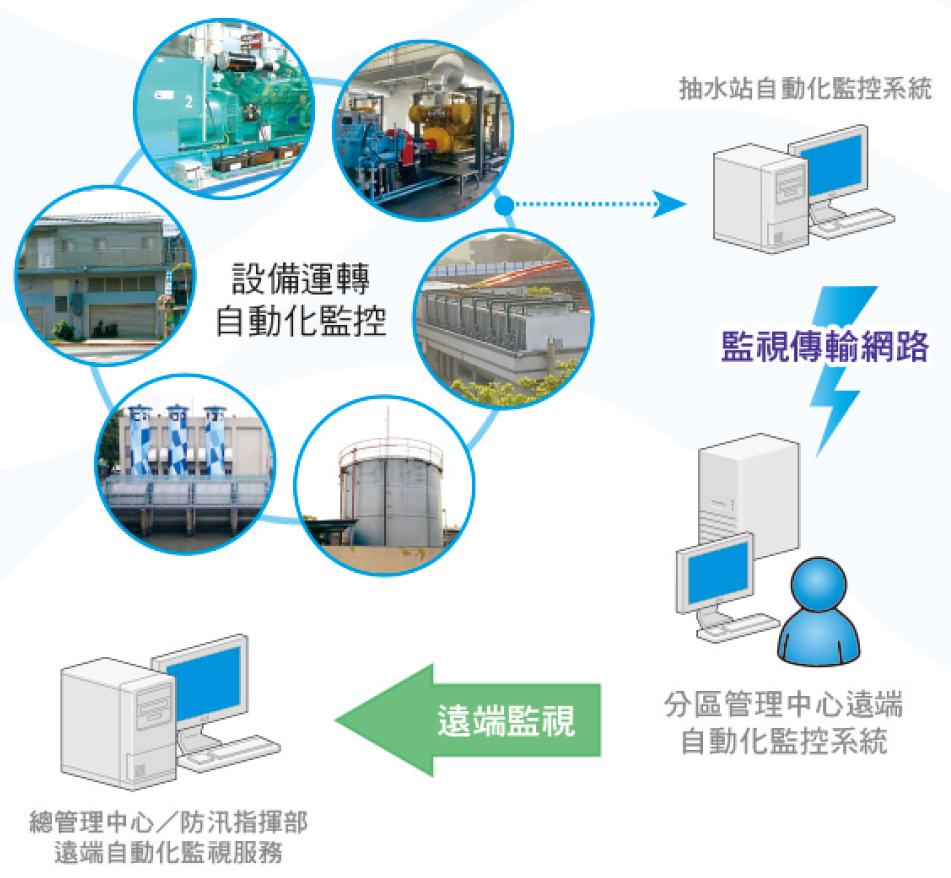
III.Remote monitoring
Install CCTV and set up surveillance server in the central control room to upload real-time images to the district management center and the main management center to monitor remotely.
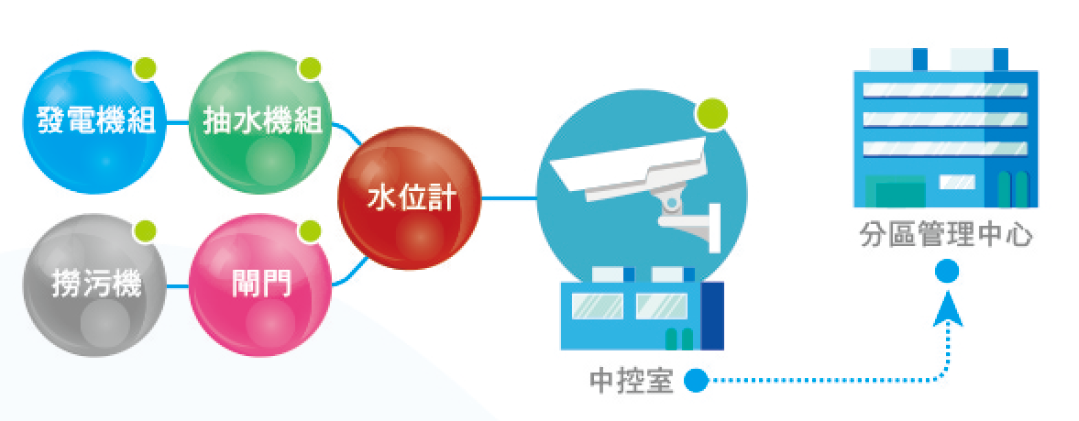
IV.Real-time video
With a comprehensive video system, the main management center and the city's flood control command can communicate with all district centers in real time to direct and contact flood control operations.
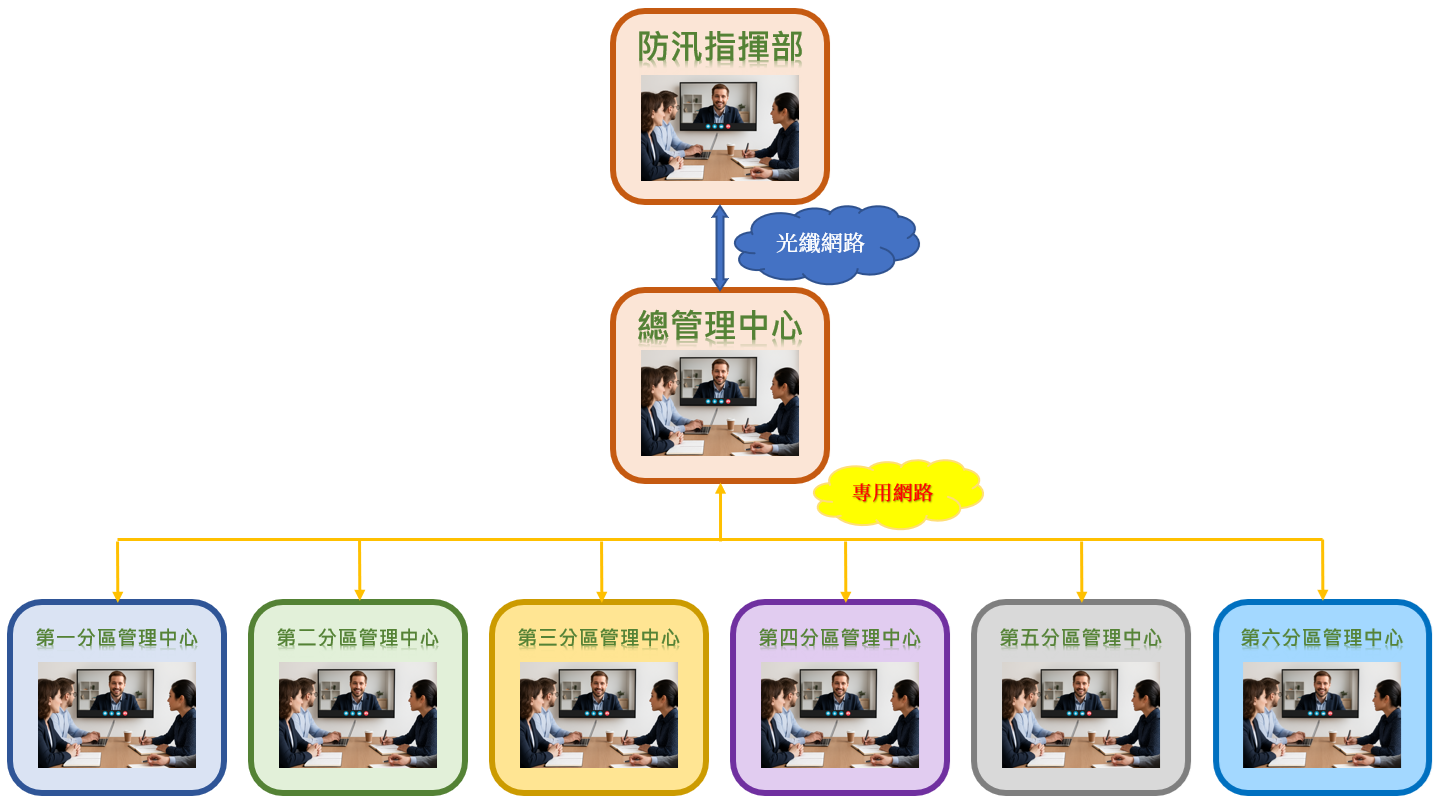
V.Security and Anti-theft
Set up cameras, infrared detectors and infrared body sensors to keep the station area safe.
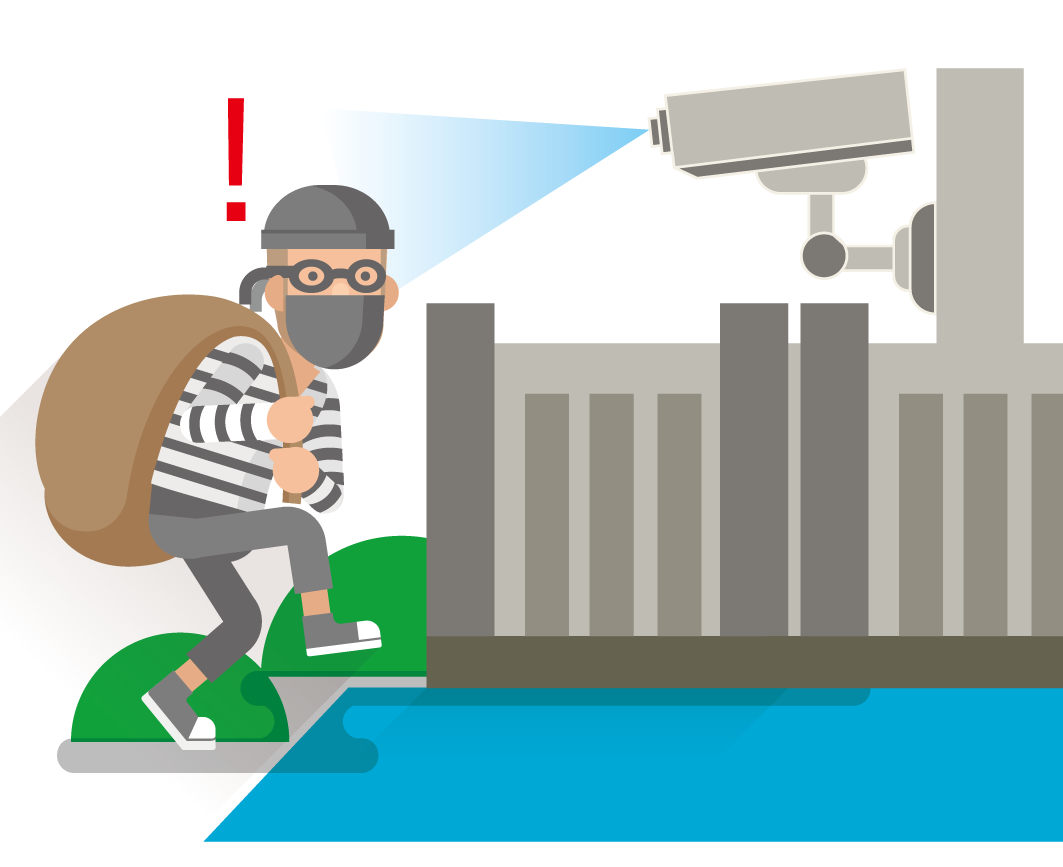
VI.Fire Alarm
Differential temperature sensors, constant temperature sensors and smoke detectors are installed as fire alarms.
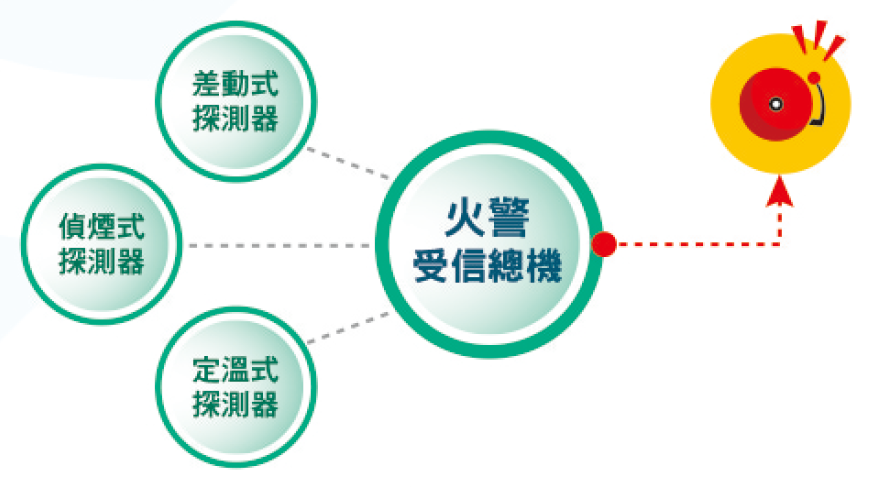
There are 88 pumping stations in Taipei City that are grouped and managed based on the river system, region, and operational characteristics to enhance the management efficiency for pumping stations, reduce labor requirements and strengthen the ability to command in case of emergencies.
There are six divisions in Taipei City; these six divisions operate and manage pumping stations automatically, computerize, optimize the performance of the units and centralize remote monitoring depending on the division of the group and this is the current policy. In the future, it is planned to gradually optimize the city's pumping station automated monitoring system, and to adopt a professional management approach in order to strengthen the city's flood control response capability and to protect the public's lives and properties.
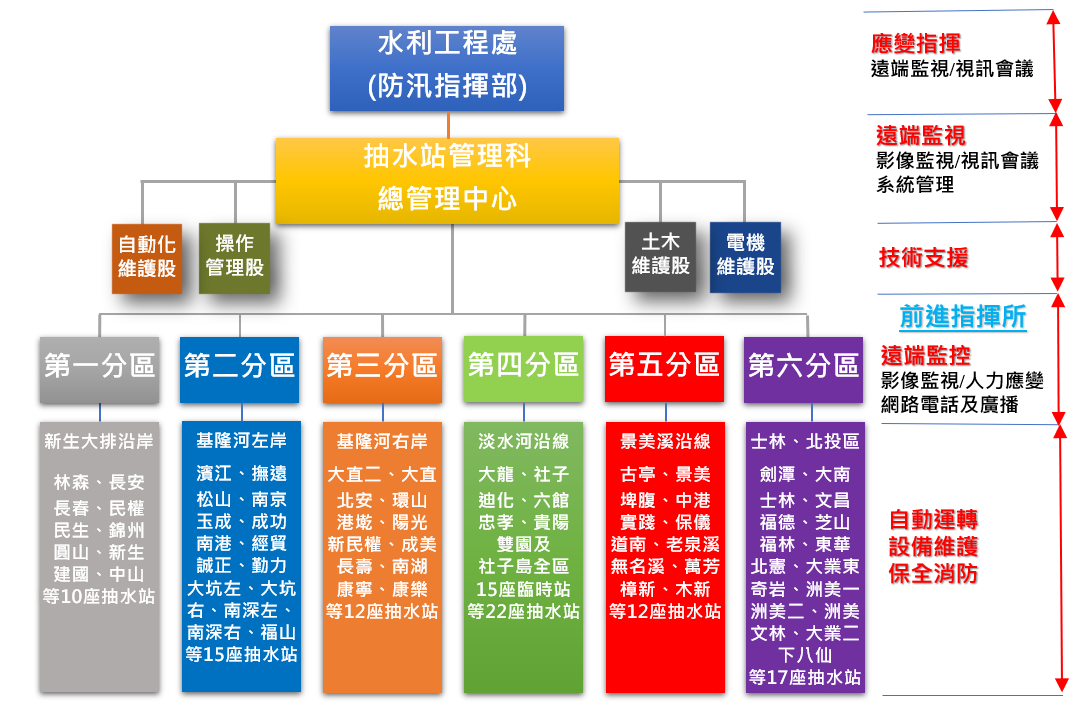
Zoning Structure
In 2007, the pumping stations around the Xinsheng Main Drainage were the demonstration area for building an automated monitoring system for the pumping stations, which was then included the drainage basin of Keelung River, Tamsui River, Xindian River, Jingmei River, Shuang River, Sulphur Creek and Huanggang Creek. The system was divided into the main management center and six district management centers.
I.In 2002, former Director of Public Works Department, Taipei City, Wei-Jen Chen, led the former Division Chief of Public Works Department, Chih-Feng Huang, the former Director of the Office of Road and Accessory Maintenance, Chun-Sheng Lo and the former Division Chief of Office of Road and Accessory Maintenance, Cheng Kuo Chen, to visit the control room of the Higashi-Mihanagaya Pumping Station in Tokyo, Japan.
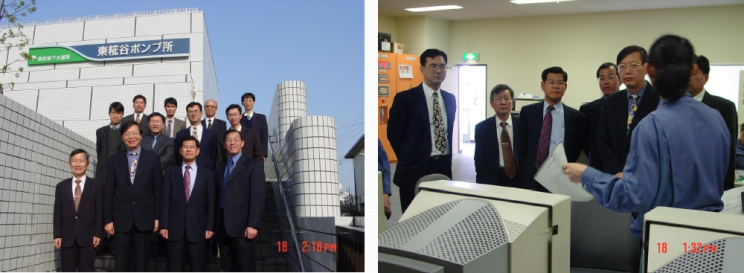
Representatives from Taipei City visited the control room of Higashi-Mihanagaya Pumping Station in Tokyo, Japan.
II.In 2003, we appointed a consultant to conduct assessment and planning and divided the system into six zones according to the river system, geographical area and operational characteristics, and managed them in groups. Ten pumping stations along the Xinsheng Main Drainage in the first zone have been selected to try out the automated monitoring and control system which was completed in November 2007.
III.The system has been stabilized after being tested by typhoons and rainstorms in 2008, 2009 and 2010. The automation system for 15 pumping stations along the left bank of Keelung River (second zone) was completed in 2014 and 12 pumping stations along the right bank (third zone) were completed in 2015.
IV.In 2019, 7 pumping stations along the Tamsui River, 15 pumping stations in the entire Shezi Island area (Zone 4), 12 pumping stations along the Jingmei River (Zone 5), and 17 pumping stations in the Shilin and Beitou areas (Zone 6) were completed. A total of 51 automated pumping stations have been completed, achieving the City's goal of automating pumping stations.
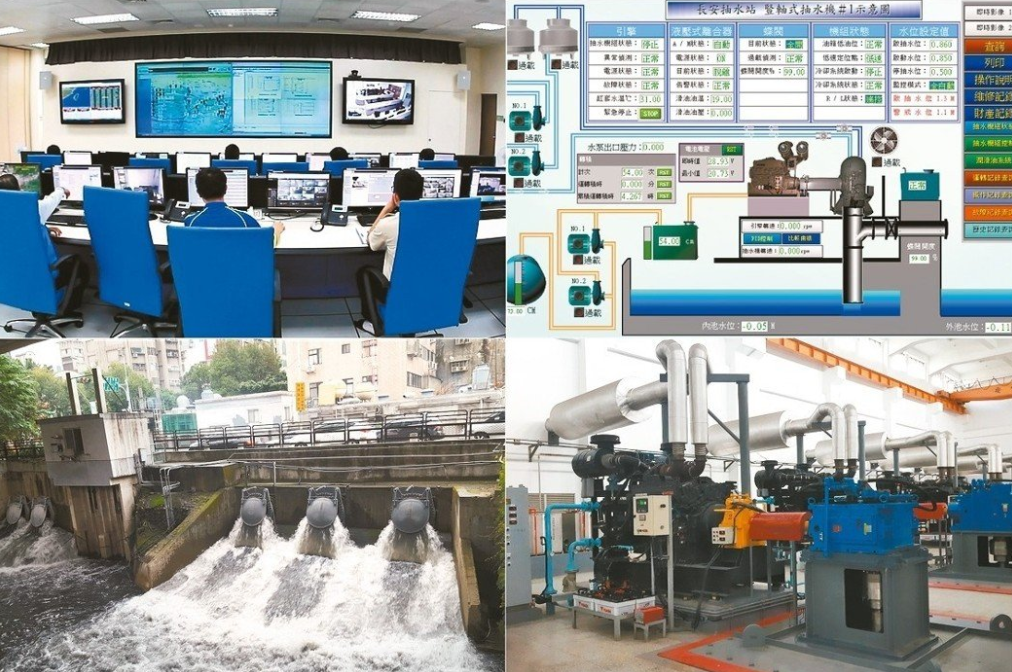
Implementation status
I.The Department has established an automated monitoring system to improve the management efficiency, and has been continuously improving the system according to the current condition, combining with the water level rise rate in the front pool, adjusting the pumping level and the number of pumping units. By analyzing various rainfall patterns and using adaptive control or machine learning methods to flexibly adjust the parameters of the warning conditions, the automated system has become smarter in terms of advance warning mechanism and allows the existing control to function in a better way, which has become the trend and direction of the times.
II.Some of the existing pumping stations in Taipei City can support each other in pumping and drainage through joint operations because the sewer systems in the adjacent drainage areas are connected by channels. If the pumping station automated control system is used for group control and management, and integrates information such as rainfall and sewer levels, it should be more conducive to the effectiveness of joint operation command and scheduling of pumping stations in the future, reduce labor requirements, strengthen flood safety, and improve the quality of pumping station maintenance. At present, the city has already decided on two joint operation areas, one for Changchun, Jinzhou, and the old Minquan pumping stations and the other for Yuanshan, Dalong, and Liuguan pumping stations, which will support each other's pumping and drainage.
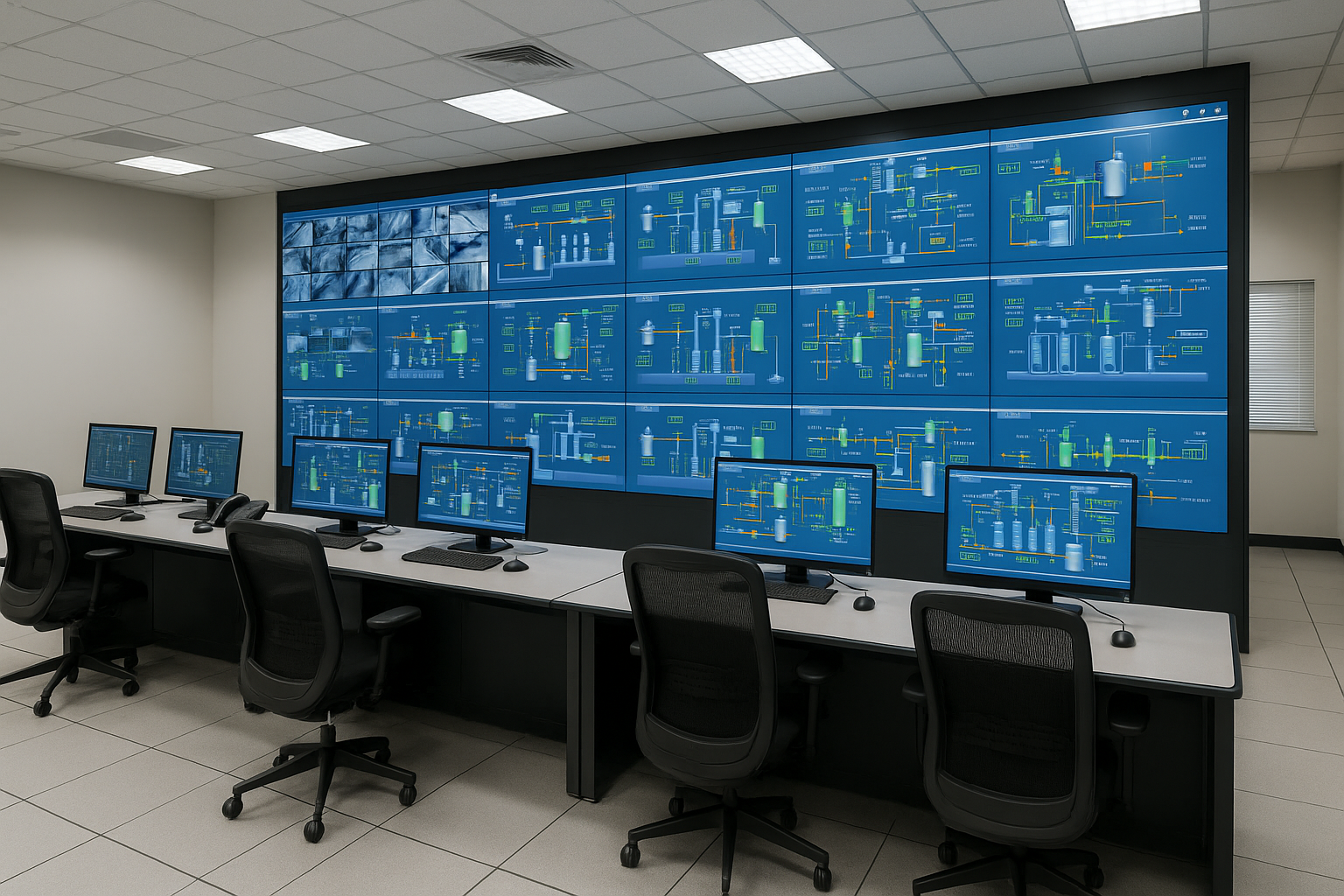

![Taiwan.gov.tw [ open a new window]](/images/egov.png)
